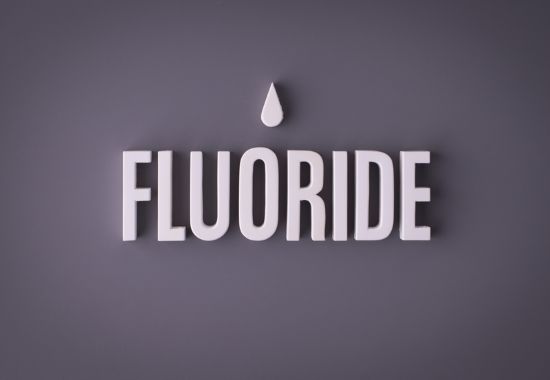I regularly receive press releases from businesses, foundations, and universities doing research in medicine, science and technology, and reporting their latest studies and findings. This morning one arrived in my inbox from the International Academy of Oral Medicine and Toxicology (IAOMT), unfamiliar to me but described as “a global network of dentists, health professionals, and scientists committed to advancing the science of biological dentistry.” The description seemed kosher and certainly sounded prestigious.
The IAOMT was reporting on new findings published by Cochrane, an international medical and healthcare research organization studying the practice of community water fluoridation and its benefits. The IAOMT had concluded from the study that community fluoridation going back to the mid-1970s was a health hazard and provided little benefit in preventing tooth decay in children. That seemed to me to be “off.”
The Background to Community Water Fluoridation
The practice of adding fluoride to community water supplies began in Grand Rapids, Michigan in 1945. Research at the time showed that fluoride levels affected dental health outcomes. Eventually, Toronto added fluoride to its water. Anecdotal evidence of children born before and after fluoride showed a significant difference in the number of cavities in people’s mouths. Instead of a mouth of fillings, young people post-fluoride in the water, had nearly cavity-free teeth.
Today, more than 400 million people in 25 countries have community water fluoridation. In 2018, 63.4% of Americans had community fluoridation. Canada, Brazil, Australia and New Zealand have made the practice universal as a public health measure. The World Health Organization has recommended it citing many studies that showed it reduced caries (tooth decay) in children in populations that were underserved.
The American Dental Association, the Canadian Dental Association, and the International Association for Dental, Oral, and Craniofacial Research, are among many in the professional community that support community water fluoridation as a safe and effective, evidence-based intervention.
IAOMT Interprets the Data
The IAOMT is the outlier in its dental community when it comes to community water fluoridation. It has published reports on fluoride neurotoxicity from exposure and linked lower IQ in children to putting it in the public water supply.
In today’s press release reporting Cochrane’s “Water fluoridation for the prevention of dental caries” review, the IAOMT interprets the effectiveness of community fluoridation practices as equivalent to the prevention of decay in 0.24, or one-quarter of a tooth for every child suggesting a practice with little impact on dental health.
The release includes a quote from IAOMT President Yuko Torigoe, who states, “Once again, the scientific literature is showing us that fluoride is not only harmful but also ineffective. It is past time dental professionals embrace other, more meaningful strategies to combat tooth decay that are effective and not toxic to the patient.”
Having read the IAOMT’s interpretation of the Cochrane study and the words of its President, I decided to do a reading of the document. It did state that community water fluoridation programs were becoming less effective over time, not because they were a danger to children’s health, but because most toothpaste brands today had added fluoride.
The IAOMT reference to decay prevention of 0.24 (a quarter tooth) came from one compiled analysis of 157 studies covering 2,908 children in the UK and Australia. The Cochrane review also cited another study of 5,708 children which showed reduction rates of 2.1 decayed baby teeth. It also included research data that showed community fluoridation had increased the number of children with no tooth decay by 3%.
All I can conclude is that the IAOMT and I were looking at the same data and drawing very different conclusions. Despite its well-credentialed website and having the right name, it appears that the IAOMT was allowing its agenda to determine its “truths” and its conclusions were not compatible with the real “facts.”
Facts About Community Water Fluoridation
Community water fluoridation is considered the simplest and most cost-effective way to maintain low-dose fluoride exposure for young people. Since the early 2000s, the US Community Preventive Services Task Force has concluded that starting water fluoridation for children and teens between the ages of 4 and 17, has reduced dental caries by between 30 and 50% and that stopping the practice increased the occurrence of caries by 18%. In other words, adding fluoride to the water in optimal concentrations has proven to be a socioeconomic benefit to the general population and particularly for people living in medically underserved communities.
As for safety, numerous studies have shown no neurological problems from community fluoride water programs. It appears that nowhere else in the public record and scientific literature is there evidence to support the alarming tone of IAOMT studies that suggest the use of fluoride in drinking water is leading to a “nationwide cognitive crisis,” and the endangerment of pregnant women.
Evidence Versus Conspiracy Theories
The advancement of science requires evidence-based testing. This begins with a hypothesis, an experiment, data and interpretation of the findings. Opinion doesn’t replace the scientific method which brings me to a chief misinformation source for fluoride conspiracy theories.
I’m talking about Donald Trump’s new choice to head up health in his administration, Robert F. Kennedy Jr. Kennedy has opposed community fluoridation programs characterizing them as equivalent to putting industrial waste in the public water supply. He believes fluoride causes cancer and neurodevelopmental disorders. He also claims it decreases children’s IQs.
Now, Trump is putting him in charge of public health for the United States. The Centers for Disease Control and Prevention oppose Kennedy’s views. Meanwhile, Trump says Kennedy’s ideas “sound okay” to him.









